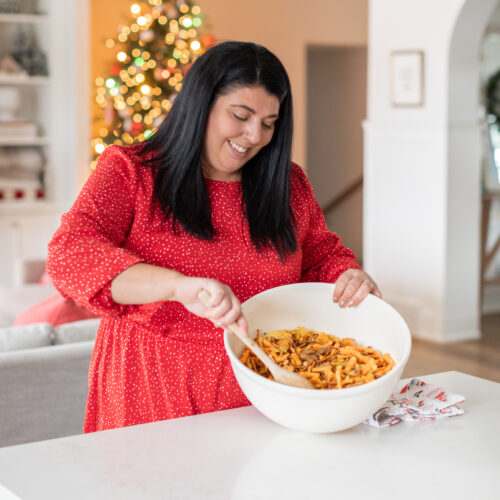Ok, there is no denying that after having Leo and Annie my pelvic floor is not in tip-top shape as it used to be! LOL! I have had a few embarrassing moments that involved sneezing or laughing too hard and I’m sure you can imagine what happened after that! 😂. Our pelvic health is so important, whether you have had babies, are currently pregnant, planning on having babies, or even if you’re not and today I am so excited to welcome a Pelvic Health Physiotherapist, Aliya to the blog to share some very important tips!
Take it away, Aliya!!
Hello to all you beautiful people, I’m so glad you’re here! My name is Aliya and I am a Pelvic Health Physiotherapist, mom to the funniest 6-year-old boy, and a popcorn addict. I’m here to tell you all the things you need to know about your pelvic floor + enlighten you on how your body actually works. So many of us float through life not knowing how or why things happen in our bodies – I’m here to educate, inform, and empower you.
We all know that Jillian is not afraid of having uncomfortable conversations or talking about things that are often hush-hush…so when I was presented with the opportunity to chat all about pelvic health on this blog, I jumped at it! Here’s why: health education is a form of health promotion. Health promotion is a form of health care. Taking care of our own health is empowering – and it all starts with education.
Stick around for my 3-part series on all things pelvic health. I’ll be giving you a crash course in female anatomy, talking all about leaks and painful intimacy, and giving you the scoop on why things can feel different down there when we’re pregnant or postpartum.
Why should we care about our pelvic health?
If you are reading this and you have female anatomy, I am willing to put money on the fact that you were taught very little about your own body during health class in high school. Any of the learning you did do (and continue to do) is likely self-directed – by chatting with your mom, friends, and people on the internet. From puberty to adulthood, pregnancy through to postpartum, and peri-menopause through postmenopause, our pelvic health is central to our overall well-being + quality of life. As Maya Angelou said: “When women take care of their health, they become their best friend.” We could all benefit from being our own best friend.
Anatomy 101
I was raised in a home where the vulva + vagina were referred to as a “pee-pee” and breasts were “bobos”; I know I’m not alone. In many cultures + homes, speaking about our private parts is just not something that happens. It’s no surprise that much of how we feel about our bodies is rooted in shame – we are taught from a young age that our bodies aren’t worthy of respect. Now, as adults, many of us have a hard time speaking up when things don’t feel right + lack the proper language to do so. We can break this cycle by learning + using the correct anatomical terms, by teaching our children the proper names for their own body parts, and by speaking about them in a neutral, non-shameful way.
When it comes to the female anatomy, what we can see on the outside is called the vulva. The vulva consists of the labia majora + labia minora, the urethral opening (for urine), the vaginal opening, and the head of the clitoris. No, the whole thing is not called the vagina. The vagina is actually on the inside. It is the slide where menstrual fluid comes out from, where a tampon or a menstrual cup go in, and where a baby passes through on its way earthside. The vagina connects the bottom of the uterus to the outside of our body.
The Pelvic Floor
The pelvic floor is a bowl-shaped structure that sits at the bottom of the pelvis. It’s made up of layers of muscles, connective tissue and fascia and it has a few very important jobs:
1. It lets things in and out (like pee, poo, and farts)
2. It supports the pelvic organs, including the bladder, rectum, and uterus 3. It stabilizes our body as one of our “core” muscles
4. It allows us to have penetrative sex + experience pleasure
5. It helps move fluid around our body
The most fascinating thing about the pelvic floor is that it is sneaky + humble. It’s designed to do all these jobs behind the scenes and without much thought on our part or recognition after the fact. It’s when things start to feel different or not “right” that we need to take a deeper look at why the pelvic floor may need some love, especially if we are experiencing things like leaks, painful sex, difficulty going to the bathroom, or pain.
5 tips for a happy + healthy pelvic floor:
1. Don’t push your pee out. Just relax and let it happen.
2. Don’t strain to have a bowel movement. Instead, put your feet up on a stool + take some deep breaths.
3. Don’t just focus on kegels; spend just as much time relaxing your pelvic floor muscles.
4. Check in with your body when you’re stressed or anxious – do you hold your stress in your pelvic floor? Take a deep breath and unclench your pelvic floor muscles.
5. Check in with a pelvic health physiotherapist if things don’t feel right, especially during big life changes (pregnancy, postpartum, peri-menopause, menopause)
Stay tuned for my next blog post where I’ll be talking about the most common pelvic floor complaint I hear and what to do about it – and no, kegels aren’t the answer! Until then, come say hi on Instagram @boxwellnessco! That’s where I spend most of my time – talking all about wellness in + out of your box.
Much love,





Thankyou so much Aliya for giving this more public recognition. We don’t realize how important pelvic is till we are older and deal with issues related to prolapse, pain, incontinence etc. Look forward to future articles. Thanks Again – V. St Andre
Thank you so much for your comment, Vivian! I agree + am so glad you are taking the time to read articles like this. – aliya